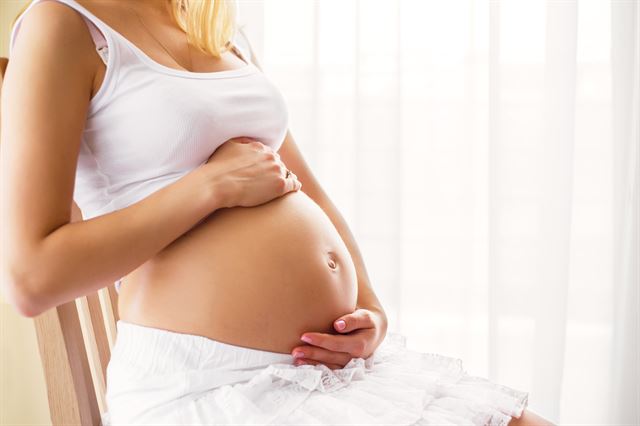
<7월 26일자 코리아타임스 사설>
Fundamental solution needed to boost birthrate
출산율 증대를 위해 근본적인 해결책이 필요하다
It is shocking to learn the monthly number of newborns in the country has fallen below the 30,000 mark. According to Statistics Korea, the number dropped to 27,900 in May, down 7.9 percent from a year earlier.
우리나라의 월별 출생아 수가 3만명 밑으로 떨어졌다니 충격적이다. 통계청에 의하면, 이 수치는 5월 2만7,900명으로 감소해, 전년 동기 대비 7.9% 하락했다.
The number hit the lowest ever recorded in the 37 years the country has been compiling data related to the birthrate. This shows how difficult it is to promote childbirth and reverse the falling trend.
이 수치는 한국이 출산율 관련 통계를 집계한 지난 37년간 최저치를 기록했다. 이는 출산을 장려하고 감소하는 출산율 추이를 역전시키는 것이 얼마나 어려운지를 보여주고 있다.
The decline is more serious than people have thought because monthly childbirths have continued to decrease since December 2015. It implies the country has so far failed to increase the rate despite government support programs costing huge sums of outlays.
이러한 감소는 2015년 12월 이래 월별 출산이 계속 감소해왔기 때문에 사람들이 생각하는 것보다 훨씬 더 심각하다. 이는 거대한 예산이 소요되는 정부 지원 대책에도 불구하고 한국이 출산율을 높이는 데 실패했다는 것을 의미한다.
In the first five months of the year, the number of newborns went down 8.8 percent year-on-year to 145,300. It was down from 159,300 in the same period in 2017 and 181,854 in 2016. The annual number of childbirths stood at 358,000 last year. So it is only a matter of time before the figure falls below the 300,000 mark.
올해 1월부터 5월까지, 출생아 수는 14만5,300명으로 전년 동기비 8.8% 감소했다. 이는 2017년 동기의 15만9,300명, 2016년의 18만1,854명보다 하락한 것이다. 연간 출생아 수는 지난해 35만8,000명이었다. 이 수치가 30만명 밑으로 떨어지는 것은 단지 시간 문제이다.
The bleak demographic outlook prompts worries that the country’s birthrate may drop below 1 this year. If such worries become a reality, South Korea will become the first country among the 36 OECD member states to see its birthrate drop to such a lowest level.
이런 암울한 인구 전망은 올해 출산율이 1이하로 떨어질 있다는 우려를 야기시키고 있다. 이런 우려가 현실화되면, 한국은 36개 OECD 회원국 중에서 출산율이 1이하 최저치로 떨어지는 첫 번째 국가가 될 것이다.
In other words, the country has just begun to suffer a demographic catastrophe. Early this month, the Moon Jae-in administration announced a set of measures to boost the low birthrate which fell to 1.05 last year, far lower than the OECD average of 1.68.
다시 말하면, 한국은 이제 인구 재앙을 겪기 시작하고 있다. 이번 달 초, 문재인 정부는 지난해 OECD 평균인 1.68보다 훨씬 낮은 1.05로 하락한 한국의 저출산율을 높이기 위해 일련의 대책들을 발표했다.
The May newborn statistics overshadowed the new support package. Policymakers seemed to believe the birthrate will go up if the government does more to improve the quality of life for both children and their parents. However, the gloomy data appeared to scoff at the new measures.
5월 출생아 통계는 이런 새로운 지원책을 무색하게 만들었다. 정책입안자들은 정부가 아이들과 부모의 삶의 질을 개선하기 위해 노력한다면 출산율이 올라갈 것이라고 믿는 것처럼 보였다. 그러나, 침울한 출생아 통계는 새로운 대책들을 비웃고 있는 것 같다.
The country has spent more than 100 trillion won ($88.7 billion) on different measures to promote childbirth since 2006. But this has not produced any real progress, indicating that the demographic issue is one of the most serious challenges Asia’s fourth-largest economy faces.
우리나라는 2006년 이래 다양한 출산 장려 대책에 100조원 이상의 예산을 지출해왔다. 그러나, 실질적 성과를 거두지는 못하였으며, 이 인구 문제가 아시아의 4대 경제대국인 한국이 직면한 가장 심각한 문제들 중의 하나라는 사실을 보여주고 있다.
Now the country needs a paradigm shift as far as the birthrate is concerned. Most of all, policymakers should find out why South Korean women shun childbirth. They should even try to understand why young people refrain from dating and avoid marriage amid the ever-rising youth unemployment rate.
이제 한국은 출산율에 있어서 사고의 대전환이 필요하다. 무엇보다도, 정책입안자들은 한국 여성들이 왜 출산을 피하는지를 파악해야 한다. 그들은 젊은 세대들이 청년실업률이 계속 증가하는 가운데 데이트를 자제하고 결혼을 회피하는 이유를 이해하려고 노력해야 한다.
No doubt the younger generation harbors worries about their future because of a lack of job opportunities.
의심할 여지없이 젊은 세대는 일할 기회 부족으로 미래에 대해 걱정을 하고 있다.
Thus, the government ought to take fundamental steps to help ease the uncertainty about the future by offering quality jobs and providing housing at affordable prices. Furthermore, it should try to work out various support programs to bring hope to young people. It is urgent to get rid of discrimination against women at workplaces.
따라서, 정부는 양질의 일자리를 제공하고 저렴한 가격에 주택을 공급함으로써 미래에 대한 불확실성을 해소하도록 근본적인 대책을 세워야 한다. 뿐만 아니라, 정부는 청소년들에게 희망을 갖도록 다양한 지원 대책을 만들어내야 한다. 직장에서 여성에 대한 성차별을 없애는 것이 시급하다.
It is also necessary for the government to change its immigration policy so the country can attract more immigrants if it fails to boost the local birthrate.
또한 정부는 출산율 증대에 실패할 경우, 더 많은 이민자를 유치할 수 있게 이민 정책을 바꾸는 것도 필요하다.
안성진 코리아타임스 어학연구소 책임연구원
기사 URL이 복사되었습니다.

댓글0